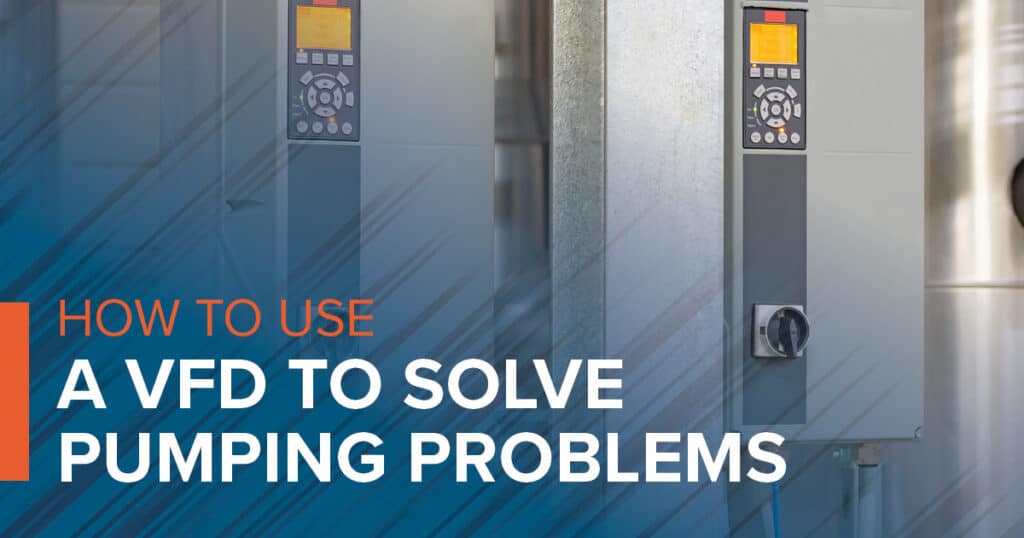Many factors go into optimizing a pump system—and keeping it optimized over time. From the controls to the equipment to the operating environment, any one issue can affect the entire system. Variable-frequency drives (VFDs) solve several problems for pump operators, especially those dealing with changing conditions. For others, a VFD may provide more headaches than it is worth. However, is it really the motor’s fault, or is it something else?
Is the VFD to Blame?
One of the most common concerns we hear about with new VFD users is their system isn’t running as efficiently as they expected. The natural tendency is to blame the variable-frequency drive as it is the newest variable. It definitely could be the problem, especially if it’s not configured properly for your specific equipment and application. It can take time and effort to dial in a VFD for optimum performance.
This is when effective troubleshooting is an important pump management skill to have. We all know not everything goes exactly right 100 percent of the time. Issues need to be addressed during operation. You can troubleshoot problems through system monitoring, operator knowledge, and equipment inspection, testing, and maintenance. The more you understand your system, the more effectively you can identify and resolve any issues or inconsistencies you encounter.
Understanding Pump Variables
First, it’s important to know all the variables that can affect a pump system’s performance and consistency. Here are a few to keep in mind:
• External environmental factors (temperature, humidity, etc.)
• Fluid variables
• Temperature
• Motor speed
• Type of pump
• Shaft alignment
• Fluid levels
• Power supply
• Friction loss
• Flow rates
• Cavitation
• Mechanical wear and tear
• Pump or pump mount damage
This is a partial list of factors that could impact how well your pump system runs. The point is the VFD may not be causing the problem. You should take a holistic approach to pump management when it comes to troubleshooting. Any one variable can have a snowball effect that compromises the entire system.
The Troubleshooting Process
Of course you can start with the VFD. Faulty equipment or technology could always be the culprit, or it may be your settings and how you use the drive system. It is designed to be sensitive and adaptable to changing conditions, so it can be subject to problems if not configured correctly.
If the VFD itself is not the source of the problem, it can actually be a useful resource during the troubleshooting process. You can run your pump system at different speeds and use the variable capabilities to take disparate actions as you seek the primary issue elsewhere in the pump system. A loss in pressure or increase in temperature when running at variable speeds may narrow down where you need to look for a potential problem. Also remember the VFD is designed to self-adjust as a result of changing conditions. If you monitor when and understand why it alters drive speeds during operation, you can learn quite a bit. If it varies the speed when it shouldn’t, that is a clear sign of a pump system problem that may or may not be caused by the VFD itself.
For all your variable-frequency drive and pump optimization needs, DXP Pacific is here to assist. We have VFD technology from leading manufacturers, and our technicians can show you how to obtain the most from your drive configuration. We provide professional equipment selection, system configuration, inspection, maintenance, and repair services. Contact us today to start.

